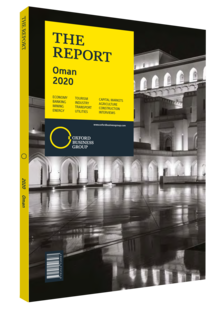Sheikh Aimen Al Hosni, CEO, Oman Airports: Interview

Interview: Sheikh Aimen Al Hosni
Which airport developments have been the most influential, and how will they contribute to growth?
SHEIKH AIMEN AL HOSNI: The government’s initiative of developing airports in Muscat, Salalah, Duqm and Sohar has been essential to the growth of Oman’s transport sector. Some of the airports have already received international recognition thanks to the great facilities in place and due to the experienced personnel operating on the ground. For example, in 2019 Muscat International Airport was voted the Middle East’s leading airport at the World Travel Awards in Abu Dhabi, and Salalah Airport received a Five-Star Regional Airport award at the Skytrax World Airport Awards in London. These airports will continue to play an important role in strengthening the foundations of economy by creating further opportunities for businesses, especially in the fields of logistics and tourism, as well as by facilitating better connectivity between Oman and other countries. In addition, there are already three major domestic oil field-related airports in operation in Oman and there are plans to add more across the country between 2020 and 2022 to further support the energy sector.
In addition to the expansion of domestic infrastructure, what factors are boosting Oman’s attractiveness to foreign and local investors?
SHEIKH AIMEN: Oman’s economic and political stability has long been a major asset when it comes to attracting foreign investment. Our strategic location between the large African markets to the west and Asian markets to the east has also played a big role in this regard, and has allowed the country to build on its long history as a key centre along major trade routes. Today, the country offers high interconnectivity between ports, road and air, all of which underpin the trade and logistics sectors, in addition to fast-emerging areas such as tourism. Infrastructure development will continue to play an important role in foreign investment. Plans are in place to ensure that the vision aimed at boosting the country’s aviation industry complements and supports the Sultanate of Oman Logistics Strategy 2040, which seeks to transform Oman into one of the top-10 logistics destinations worldwide. The creation of the Oman Aviation Group in February 2018 was a step towards the realisation of this goal. Now that the entire aviation sector – including Oman Air, the country’s flagship carrier; Oman Airports; and Oman Aviation Services – is under one roof, it will be easier for the Ministry of Transport and Communications to better manage different assets within the aviation industry.
What aviation developments are set to help address growing freight transport demands?
SHEIKH AIMEN: A number of government and public sector stakeholder institutions within the country’s aviation industry have come together to support the ambition to develop air cargo services. The most notable result of this has been the creation of the Oman Aviation Group in 2018, which has aligned the projects of Oman Airports with the strategies of both Oman Air and Oman Aviation Services to improve freight transport procedures. New facilities and regulations are also to be implemented to ensure readiness for trade growth.
Some examples of projects in the pipeline include the construction of a new perishables-handling centre and cold-chain products facility and an increase in the number of fisheries processing plants, with the aim of having the capacity to process 35 tonnes of fish per day. In addition, Customs has been reorganised to streamline regulations and develop integrated IT platforms for all air cargo systems. There are also a number of projects that have been recently completed. For example, in 2018 Muscat inaugurated a new 345,000-tonne cargo terminal, with plans to increase capacity to 650,000 tonnes by 2030. In addition, Sohar Airport and the newly inaugurated Duqm Airport are strategically located next to their respective ports, further developing the strength of the country’s air and sea cargo corridor.
You have reached the limit of premium articles you can view for free.
Choose from the options below to purchase print or digital editions of our Reports. You can also purchase a website subscription giving you unlimited access to all of our Reports online for 12 months.
If you have already purchased this Report or have a website subscription, please login to continue.

